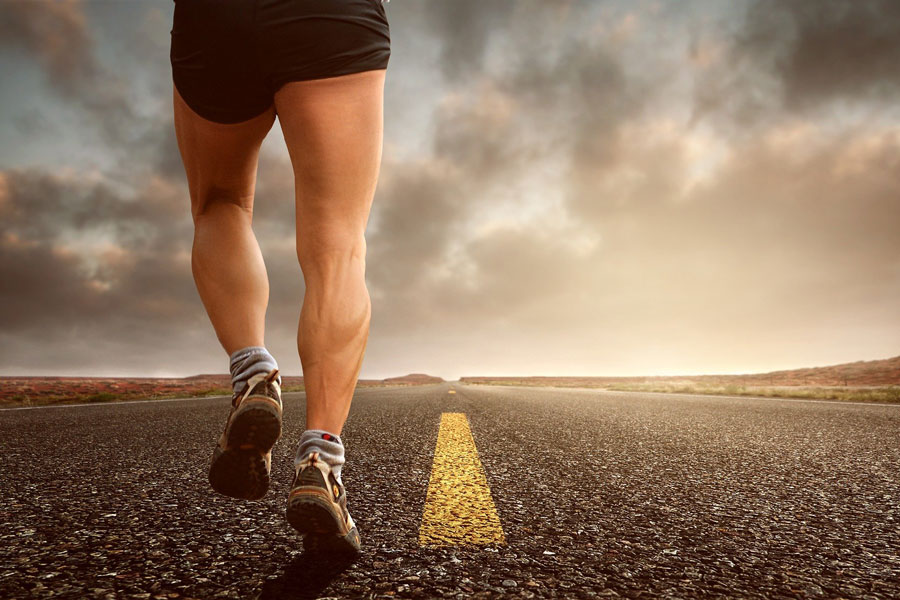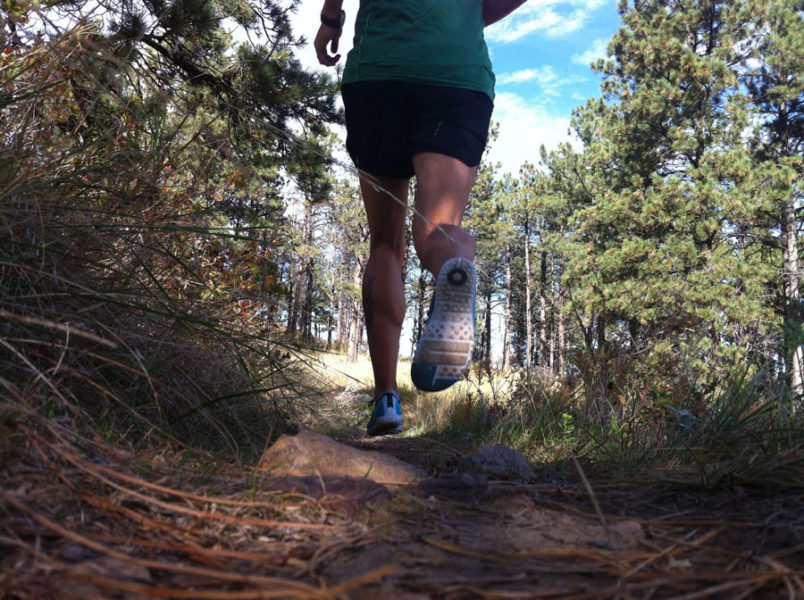
Everyone loves to feel a bit of fresh air, and there is certainly no better way to experience the fresh outdoors than with a jog or a run. This form of exercise will be a fantastic way of keeping you fit and enjoying your surroundings. Moreover, running has got a series of amazing benefits as well. Accordingly, many choose running as one of the best activities to indulge themselves in. However, it is necessary to keep your body in its best condition to maximize your running performance. Along with this topic, running shoes is something that comes into the stage. What is the importance of running shoes? Are there different running shoe types? Of course, these might be a few of the doubts you have in your head now. If you are interested on shoe details in wiki click here.
Simply, as long as hiking shoes play a significant role in hiking, running shoes play a major role in achieving the best out of running. Moreover, there are several types of running shoes as well. Therefore you must choose the correct and the best trainers to help you with it. From the cushioned sole to the mesh upper part, your body requires protection from heel to toe.
Running shoe types – How to choose exactly what you are looking for you?
When it comes to preventing injuries and improving your running and training efficiency, you cannot think mildly about the importance and use of proper shoes. If you are getting ill-fitting shoes, you are preparing your body for pains and injuries. Obviously, no one wants that. Someone does not have to mention that it is also a complete waste of your valuable time and money. On the other hand, for most of the runners, finding their perfect pair of shoes is like a dream coming true. A suitable pair of running shoes can help you run comfortably, and they will automatically increase your efficiency. This is something all of the runners need, regardless of their training background and running goals.
Also, the right shoe will be able to prevent future injuries and promote your performance. Accordingly, it is important to choose your running shoes right. However, many factors can affect your shoe selection. Things like your own weight, unique biomechanics, the training surfaces, training goals, personal preferences, and also your foot type and gait should be considered when purchasing a new pair of shoes. Besides, if you need to find the best running shoes for you, you want to know your foot type and type of shoe that can support your arch and running style. So first of all, let us have look at that!
Foot type and pronation
There are primarily three different foot types: neutral arch, low arch, and high arch. The height of your arch is affecting the direction and severity of the way your feet roll – or pronates. Pronation is the natural side-to-side movement of the foot as you walk or run.
Accordingly, there are three main foot types. Here are the details of how they roll:
- Neutral arch: This arch typically causes your foot to roll to a healthy spot.
- Low arch: This arch normally causes the foot to roll excessively inward or overpronate.
- High arch: this arch will cause the foot to roll in only slightly at impact or under pronate.
Determining your foot type
The wear on your shoes will likely reveal your foot type.
- If your shoes show even wear, then you have a neutral arch, and you are a normal pronator.
- When your shoes’ inner soles are usually worn down, you are an overpronator, and you probably have a low arch.
- If your shoe wear shows excessive wear type on your shoes’ outer soles, you are an under pronator, and you might probably have a high arch.
Different running shoe types at a glance!
Now, having an idea about the various foot types, let us draw your attention towards the different running shoe types in the modern world. Of course, there is a lot! Knowing about them would help you choose the best out of the best of the running shoe types.
1. Lightweight shoes
When you are doing a lot of speed work, races, or if you are going to dial up the speed in your training, the lightweight trainer must be your first shoe choice. They are lightweight and flexible. These shoes are ideal for speed workouts such as sprints, tempo runs, intervals, and fartlek. They are not like racing flats, lightweight shoes are flexible and it will allow you to build foot strength, but otherwise, they are quite similar. Therefore, some people choose racing in lightweight trainers. There is some problem with lightweight shoes too. In general, these shoes do not offer cushioning and shock absorption options, such as regular road shoes, which are classified in the neutral or stability categories.
If someone has only ever run in cushioned trainers when you are first starting to use lightweight trainers, you should be sure to ease into the transition. Do not just use the shoes on the morning of your running event. You can slowly start by walking in the shoes so it can build your foot strength. Then, you can do some shorter running events, and eventually, you can increase the use week by week. These lightweight shoes are manufactured with less foam and cushioning features under your foot. It will allow for a more natural and dynamic motion for the foot.
2. Trail runners
Trail runners are manufacturing to run across dirt, mud, rocks, and other off-road obstacles. Therefore, they need the best in support, stability, and protection. These shoes are designed to use in off-road routes with rocks and especially on uneven surfaces. You can think of trail shoes as they are a mix of running sneakers and hiking shoes.
There is a wide range of shoes to select from in the trail shoe category — there are lightly cushioned shoes that look just like a racing flat and big bulky shoes that look like a hiking boot. Customer’s choice of trail shoe can depend on how far he is running, weather conditions on the trail, and what type of terrain you are planning to run.
However, there are a few standard features across trail shoes:
- Lugs: Trail shoes can include an enhanced tread just for dependable traction on loose or slippery surfaces. These individual treads are calling as lugs. If you are running on the solid ground, sand, rocky interface, hard-packed dirt, you’ll want relatively low-profile lugs, but if someone is going to be on wet grass, you can look for something with more massive lugs.
- Rock plate: These plates are there to prevent sharp rocks from poking out from the midsole and into your foot. Most of the trail shoes have a rock plate. A rock plate is a thin and a firm layer of material that can prevent the rock from poking through the shoe into your foot.
- Reinforced upper: These trail shoes usually are more durable and have a heavier upper. Trail shoe uppers can scrape up against sticks, hard surfaces, and rocks, and they are more durable so they can withstand the abuse.
3. Spikes
When sprinting on a track event or around a cross-country course, your best choice is spike shoes. Spikes are the lightest running shoes out there, which you will find. It will often weigh less than 5 ounces (142 grams). As their name describes, spikes are fixed with a set of plastic or metal spikes at the forefoot, so it will give better traction. These spikes can get you on the edge of your feet, and if it is a shorter sprint race. Thus, your shoe heel will not even make contact with the track ground.
Spikes are usually the stiffest shoes. The plastic or metal plate at the bottom of the shoe makes it very rigid. Spikes are suitable for longer races like 10,000m or cross country. They may have some cushioning cloth, but it will be at a minimal level compared to other shoes. You’ll likely do very small distance running in spikes if you are just running for exercise. It will be the best and only option for your hardest track event workouts and only if you are able to race in them.
4. Racing flats
Your first clue is in the name. If you are going for a road race, you are going to need your racing flats. Racing flats are also famous as flats. Like the spike shoes, racing flats also lighter than training shoes and they are stiffer than a trainer. You can find flats with a variety of cushioning options from the minimal range for mile road racing and substantial cushioning for marathons.
You must do some training in your new racing flats so you will be able to know how they will feel on your race day. But otherwise, they will spend most of the time in the shoe rack because, as a lightweight shoe, they cannot bear and withstand the circumstances of daily training. Therefore they are often stiff, so you will want to do most of your training with a more flexible shoe that can build your foot strength with a full range of motion.
5. Stability Shoes
Stability sneakers are a running shoe type that usually recommends runners who have normal arch feet or neural feet. These athletes require shoes that have a good mix of midsole cushioning, strength, and good support.
There will be nothing bad happen with pronation (the way your feet roll inward for impact distribution when landing)—it’s, in fact, a part of human movement. But if there is too much pronation, it might be problematic. Stability shoes can come as a problem solver because they can help prevent or reduce excessive pronation impact by offering more arch and ankle support throughout the running cycle.
6. Daily trainers
For most professional runners, these are the shoes they are doing most of their running in. It will not matter if the event is an easy run, long run, recovery run, or any other time when you are at an easy aerobic pace, these shoes will likely be the most perfect and comfortable choice. Generally, these shoes are moderately cushioned. Further, they come with more durable and heavier materials. Daily trainers are designed to hold up to the rigors at daily use.
Most maximalist shoes could be daily trainers; they’re just far more cushioned than other trainers. There will be a tipping point of cushioning for every runner at which it starts to alter your natural gait. So if you’re trying out shoes with a heel-to-toe drop of more than 6mm or a “rocker” style midsole, make sure you’re still running naturally in them.
7. Motion-control shoes
As previously described, pronation is part and parcel of the human body’s natural movements. But not every runner pronates equally. Some of them do it excessively. That is why they might require a pair of shoes that can help them limit or even prevent this pronation.
Motion-control shoes are usually for runners with low arches. They have serious over-pronation problems, calling as the excessive inward rolling from the foot following a foot strike. Motion-control shoes are a running shoe type that usually more rigid than average sneakers, and they come with a wide sole. This wide sole can limit excessive motion throughout their gait cycle. These are also the ideal shoe type for heavy individuals who are looking for shoes that can provide high stability and durability.
The Bottom line
If you are shopping at a quality, high brand running shoe store, the employees at the shop often have extensive knowledge about running shoe types and they can help you when selecting a pair that can support your foot type. Moreover, if you are a beginner, it is important that you pay attention to the running shoes for beginners.
However, when you are trying on shoes, these tips are important:
- Try on the selected running shoes toward the end of the toes when your foot is the most full.
- You should wear socks, orthotics, and braces that you are typically wearing when running.
- Stand up and move a bit to check the length and width of the shoes.
- Perform a heel raise, walk, and a little jog with the shoe so you can make sure that shoes are comfortable and offer the support you need.
- How the shoe feels in the store will be the same as how it will feel when you are at grounds, running. So definitely take your time and choose wisely and carefully.
It is better to replace your running shoes when you complete every 400 to 600 miles because the shock absorption of shoes will deplete with every passing mile. You should not feel the white midsole material peeking from the outsole, and the sole under your foot should not feel as crushed. In summary, what you require is different types of shoes for different runs. It is not different running shoe types for different anatomical foot structures. Different categories of shoes are existing, and they should exist for different types of runs.



32 comments